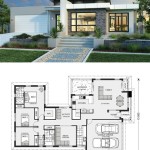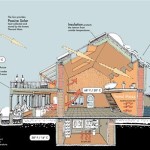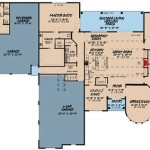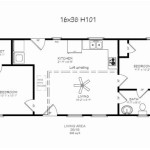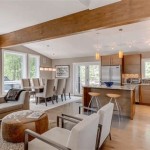Steel Frame House Design Plans: A Comprehensive Guide
Steel frame house design plans represent a modern and increasingly popular alternative to traditional wood-framed construction. These plans utilize steel as the primary structural component, offering a range of advantages in terms of durability, design flexibility, and construction speed. This article provides a detailed examination of steel frame house design plans, outlining key considerations, benefits, design principles, and the overall process involved in creating a structurally sound and aesthetically pleasing home.
The adoption of steel frame construction is driven by a combination of factors, including advancements in steel manufacturing, a growing awareness of sustainability, and the need for more resilient building solutions in regions prone to natural disasters. Understanding the intricacies of steel frame house design plans is crucial for architects, builders, and homeowners alike, ensuring a successful and cost-effective construction project.
Understanding the Core Benefits of Steel Frame Construction
Steel frame construction boasts several significant advantages over traditional building methods. These benefits extend from the design phase to the long-term maintenance of the structure. A thorough understanding of these advantages helps in making an informed decision about whether steel frame construction is suitable for a particular project.
One of the primary benefits is the
superior strength and durability
of steel. Steel has a high strength-to-weight ratio, meaning it can support significant loads while being relatively lightweight. This allows for larger spans and more open floor plans, reducing the need for internal load-bearing walls. Steel is also resistant to pests like termites and rodents, which can compromise the integrity of wood-framed structures. Furthermore, steel is non-combustible, providing increased fire resistance compared to wood.Another key advantage is the
design flexibility
offered by steel frame construction. Steel can be easily formed into various shapes and sizes, allowing for intricate architectural designs that might be difficult or impossible to achieve with wood. This inherent flexibility enables architects to create unique and personalized home designs that meet the specific needs and preferences of the homeowner. The precision of steel fabrication also ensures accurate dimensions and consistent quality, leading to a more predictable and efficient construction process.Finally,
faster construction times
are a significant benefit of steel frame construction. Steel components are typically prefabricated off-site, which reduces on-site labor and construction time. This prefabrication process ensures consistent quality control and minimizes waste. Once the steel frame is delivered to the site, it can be quickly erected, allowing other trades to commence their work sooner. The overall reduction in construction time can translate into significant cost savings for the homeowner.Key Considerations in Steel Frame House Design
Designing a steel frame house requires careful consideration of several factors to ensure structural integrity, energy efficiency, and compliance with building codes. These considerations encompass structural design, insulation, corrosion protection, and connection details.
Structural Design and Engineering:
The structural design of a steel frame house must be performed by a qualified structural engineer who has experience with steel construction. The engineer will analyze the loads acting on the structure, including dead loads (the weight of the building materials), live loads (occupancy loads), wind loads, and seismic loads. The engineer will then design the steel frame to withstand these loads safely and efficiently, ensuring the stability and durability of the building. This process involves selecting appropriate steel grades, determining member sizes, and designing connections that can transfer loads effectively.Insulation and Energy Efficiency:
Steel is a good conductor of heat, which means that a steel frame house can be susceptible to heat loss in cold climates and heat gain in warm climates. Proper insulation is therefore crucial to maintain a comfortable interior environment and minimize energy consumption. Various insulation materials can be used, including spray foam insulation, rigid foam insulation, and batt insulation. The type and amount of insulation will depend on the climate zone, the desired energy performance, and the building code requirements. Thermal breaks can also be incorporated into the design to reduce heat transfer through the steel frame.Corrosion Protection:
Steel is susceptible to corrosion, especially in environments with high humidity or exposure to salt air. Protecting the steel frame from corrosion is essential to ensure its long-term durability. Several methods can be used to prevent corrosion, including galvanizing (coating the steel with zinc), painting with corrosion-resistant coatings, and using stainless steel in critical areas. The choice of corrosion protection method will depend on the environmental conditions and the desired lifespan of the building. Regular inspections and maintenance can also help to identify and address any signs of corrosion early on.Connection Details:
The connections between the steel frame members are critical to the overall structural integrity of the building. These connections must be designed to transfer loads effectively and withstand the stresses imposed on them. Common connection methods include welding, bolting, and riveting. The choice of connection method will depend on the load requirements, the steel grade, and the fabrication process. Careful detailing of the connections is essential to ensure that they are properly executed and that they perform as intended.The Process of Creating Steel Frame House Design Plans
Developing steel frame house design plans involves a series of steps, from initial concept to detailed construction documents. This process requires collaboration between the homeowner, architect, engineer, and builder to ensure that the final product meets the homeowner's needs and is structurally sound and buildable.
Conceptual Design:
The first step is to develop a conceptual design that outlines the basic layout, size, and style of the house. This involves working with an architect to create preliminary sketches and floor plans that reflect the homeowner's vision. The architect will consider the site conditions, the homeowner's budget, and any specific design requirements. The conceptual design should also address the functional aspects of the house, such as room sizes, traffic flow, and accessibility.Schematic Design:
Once the conceptual design is approved, the architect will develop a schematic design that provides more detail on the building's form, materials, and systems. This phase includes creating elevations, sections, and 3D renderings to visualize the house from different perspectives. The schematic design will also address the basic structural system and the mechanical, electrical, and plumbing (MEP) systems. The architect will work closely with the homeowner to refine the design and address any concerns.Design Development:
The design development phase involves refining the schematic design and developing detailed drawings and specifications. This includes specifying the materials and finishes, selecting the appliances and fixtures, and detailing the interior and exterior elements. The architect will also coordinate with the structural engineer to finalize the structural design and ensure that it is integrated seamlessly with the architectural design. The design development phase also includes developing detailed cost estimates to ensure that the project remains within budget.Construction Documents:
The final step is to create construction documents, which are a complete set of drawings and specifications that are used by the builder to construct the house. These documents include detailed floor plans, elevations, sections, structural drawings, MEP drawings, and specifications for all materials and finishes. The construction documents must comply with all applicable building codes and regulations. The architect and engineer will work closely together to ensure that the construction documents are accurate, complete, and coordinated.In addition to the technical aspects of creating steel frame house design plans, it is also important to consider the aesthetic aspects. Steel frame construction allows for a wide range of architectural styles, from modern and minimalist to traditional and rustic. The design should be tailored to the homeowner's preferences and should complement the surrounding environment. The use of different cladding materials, such as brick, stone, wood, or stucco, can help to create a unique and visually appealing exterior. Interior design elements, such as exposed steel beams or columns, can also add character and charm to the house.
Successfully implementing steel frame house design plans requires a collaborative approach, with open communication and coordination among all stakeholders. This ensures that the final product meets the homeowner's needs, is structurally sound, and is built to the highest standards of quality. By carefully considering the key factors outlined in this article, homeowners, architects, engineers, and builders can work together to create a beautiful, durable, and sustainable steel frame house.

Perfect Metal Steel Frame Home W Diffe Layouts Hq Plans S House Buildings

House Floor Plans Metal Homes

Residential Steel House Plans Manufactured Homes Floor Prefab Metal

Catalog Modern House Plans By Gregory La Vardera Architect

The Henryville Steel Home Framing Package Lth Structures

Next Generation Steel Frame Homes Gen Living

Residential Steel House Plans Manufactured Homes Floor Prefab Metal

House Plans

Metal Building House Plans Houses

Light Steel Frame House Design Cad Files Dwg Plans And Details

